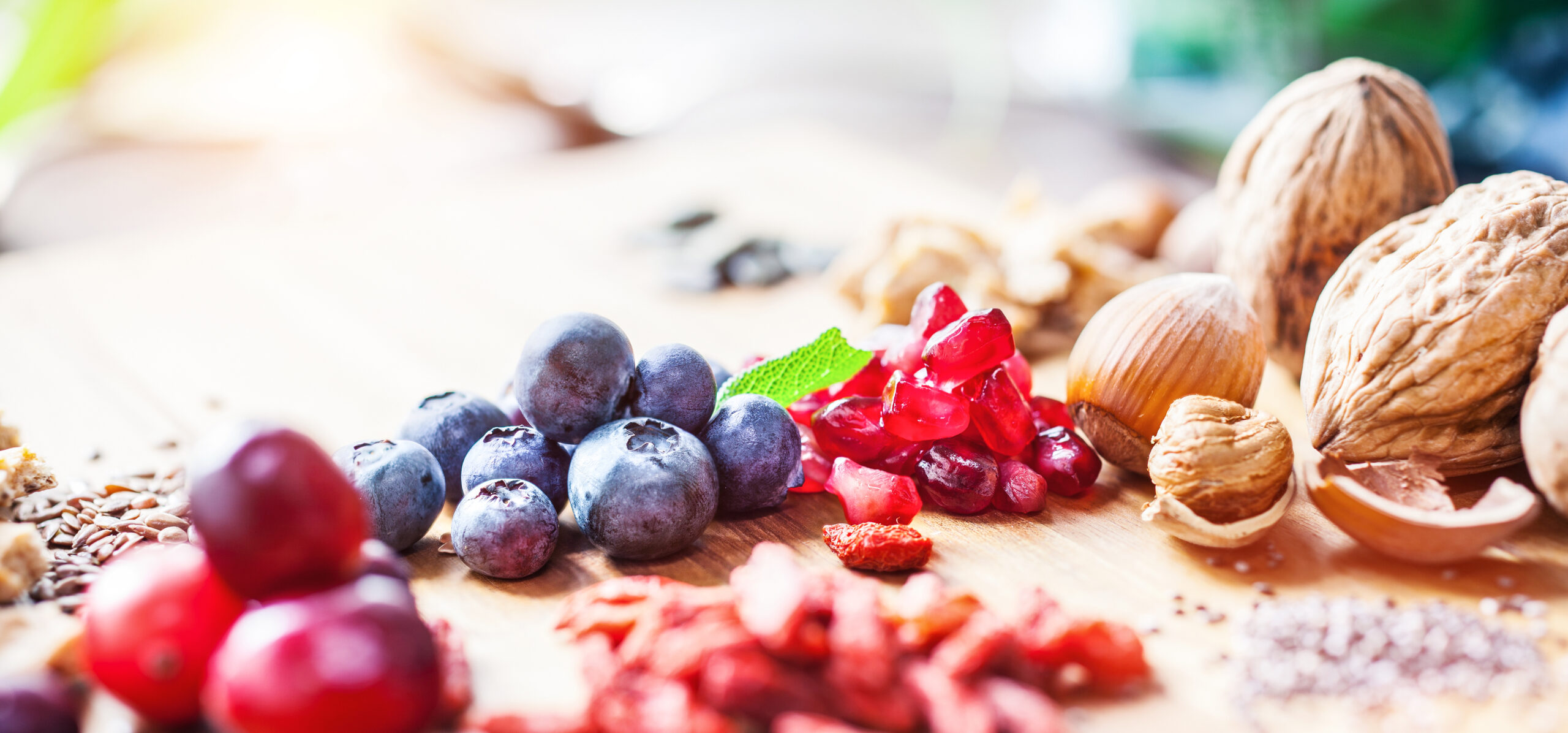Superfoods are very much in vogue. Goji berries, avocados or chia seeds are among the most popular trendsetters among healthy foods.
Manufacturers advertise the often rather exotic foods as true ‘superfoods’, which are supposed to lower cholesterol levels and strengthen the immune system, for example. Yet chia seeds, goji berries and the like are often much more expensive than their domestic alternatives and pollute the environment with their increased CO2 footprint. The long transport routes from distant countries are the reason for this. But are there equally good alternatives at home? In this article we present three alternatives to common ‘superfoods’.
What is the alternative to avocados?
The avocado is particularly popular for its taste and its high content of unsaturated fatty acids. These can definitely have a positive effect on the cardiovascular system. But the cultivation area of avocados was originally in Central America and in the rainforest of Mexico. Today, it is also grown in South Africa, South America or even in Israel, for example. For America and Africa, this is great news. For Europe, however, it is a long way for the export hit. But there is one representative that is in no way inferior to the avocado: The walnut!
Walnuts even have a higher content of mono- and poly-saturated fatty acids and captivate with their distinctive taste. They are ideal as a topping on bread or as a nutty garnish in muesli. Another advantage is the fact that walnuts can grow here in Germany and have a very long shelf life due to their good storability in a natural way. This ensures sustainability and protects the environment.
What is the alternative to chia seeds?
Chia seeds promise a high fibre content, as well as a high proportion of omega-3 fatty acids, which are anti-inflammatory, promote blood clotting and also have a positive effect on the cardiovascular system. The swelling properties of chia seeds are also very popular, as they have a very positive effect on digestion. But even these little friends are not grown worldwide and have a long way to go before they find their place on most shelves. Chia seeds, also called Mexican chia or Spanish sage, come from Mexico and Peru further south. Flax seeds offer a successful domestic alternative! Flax seeds have the same properties as chia seeds and are also rich in protein. They also swell up in the intestine and cleanse it gently.
What is the alternative to goji berries?
The ‘miracle fruit’ goji berry is highly praised for its high vitamin C content. It is said to help with sleep problems and even prevent cancer. But this berry also comes from far away. The berry is grown in China, dried and then transported to the rest of the world. During the drying process, valuable nutrients are usually lost. In addition, the goji berry has been in the headlines more and more often because it contains many different pesticides and even interacts with blood-thinning medicines. But there are berry varieties that can keep up with the positive properties of the goji berry and are cultivated worldwide: The blueberry, the blackcurrant and the sea buckthorn! These berries are excellent substitutes for the goji berry. Not only are they significantly cheaper, but they are also available as fresh produce or juice. However, those who do not want to do without the goji berry can alternatively plant their own in the home garden, as the berry also thrives in several climates.
Conclusion
It makes perfect sense to prefer local products to exotic ‘superfoods’. Not only are local products significantly cheaper than their competitors, but in most cases they are regionally grown, fresh and in many cases even available unpackaged. This significantly reduces the ecological footprint and is also easy on the wallet.

